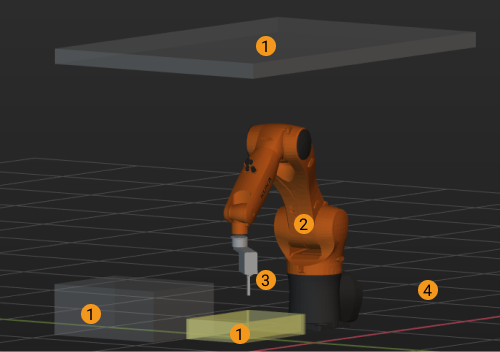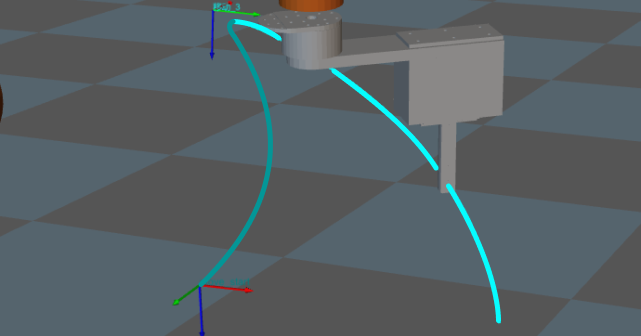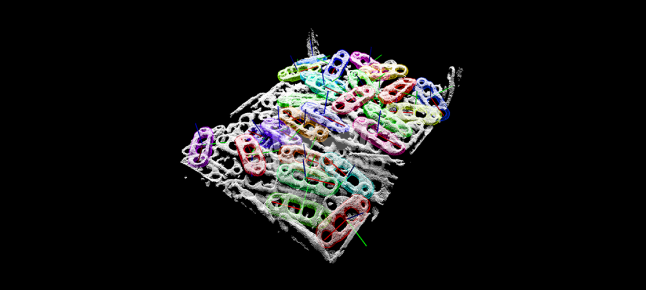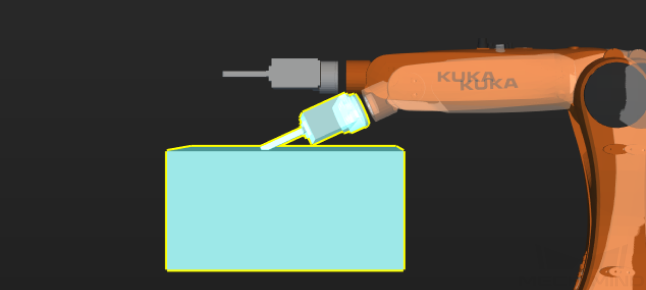3D Simulation Area
The robot, scene objects, tools, workobject models, robot motion path, pick points, and collisions will be displayed in the 3D Simulation Area. Also in this area, you can drag and drop the models of scene objects.
Mouse Actions
The navigation gizmo shows the current view in the workspace. Click the icon of each axis (X, Y, Z, -X, -Y, -Z) to align the view with the axis. Press and hold the left mouse button and drag the navigation gizmo to rotate the view.

Rotate the view |
Press and hold the scroll wheel and drag in any direction, or press and hold the left mouse button and drag the navigation gizmo in any direction. |
Pan the view |
Press and hold |
Zoom in/out |
Press and hold |
Fit the view |
Click |
Switch to perspective/orthographic view |
Click |
Show pressed keyboard keys and mouse buttons |
Once |
Display Scene Objects
The 3D simulation area displays the following models in a project:

① Scene object model, ② Robot model, ③ Tool model, ④ Ground
Display Planned Path
Whether for a real scenario or a simulated one, the 3D simulation area can display the planned path of the robot. You can use the displayed path as an aid for adjusting the motion of the robot.

Display Received Vision Result
The vision result returned by the vision service will be displayed in the 3D simulation area. Generally speaking, a vision result includes: workobject point clouds, scene point clouds, workobject poses, workobject ID, and customized pose labels that indicate the characteristics of the workpieces.

Display Detected Collisions
When planning a path for the robot, Mech-Viz detects whether the robot and/or its tool will collide with scene objects, workpieces, or workobject containers. When a possible collision is detected, the two objects involved in the collision will be displayed with blue highlight and yellow outlines in the 3D simulation area, as shown below.
